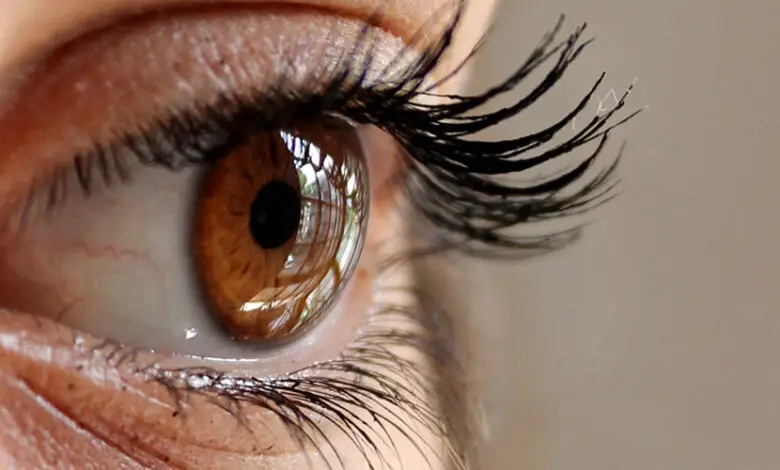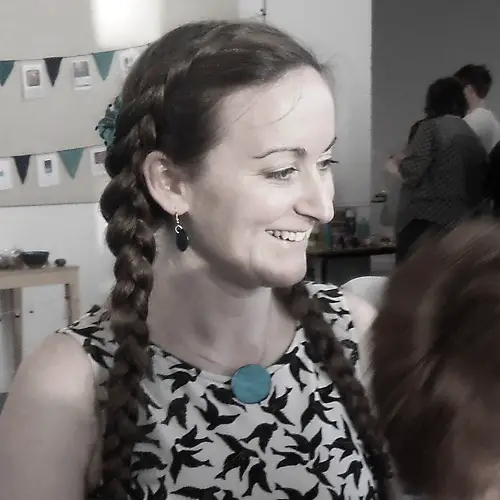
Misconceptions about autism: 3 myths about eye contact with autistic people
Autism is a neurological disability that impacts a person’s social skills, communication and behaviours. One challenge that many autistic people face is keeping eye contact when talking to people.
As part of our short series on ‘misconceptions about autism’, sensory engagement specialist Joanna Grace explores 3 myths about eye contact with autistic people.
Hello, I’m Joanna Grace. I’m an author and a trainer and I am also autistic. Like many women on the spectrum, I was diagnosed in adulthood.
My working life has always been about inclusion. I have had job roles supporting children to be more included in mainstream schools, supporting children in special schools and improving provisions within adult care.
In this article, I’m going to explore something that often comes up when people talk about being autistic – eye contact. It’s not something I’m great at myself. I find conversations flows better at a 45-degree angle than face-to-face.

Myth 1 – autistic people cannot make eye contact
This is well known but factually inaccurate. Whilst many autistic people struggle to make eye contact, some are able to, so don’t assume someone who identifies as being autistic won’t be able to meet your gaze.
Lack of eye contact is often considered a defining feature of autism, not because it is particularly significant to the neuro difference, but because it is particularly noticeable.
Myth 2 – autistic people need to be supported to make eye contact
A lot of effort is spent trying to get autistic people who do not naturally make eye contact to do so. I wonder why this is?
People believe that attention is signalled by the direction in which we look. This is true for some people, but not everyone. If the aim is successful communication, then the support should be directed towards whatever makes communication successful.
Suppose I am someone who can make eye contact if instructed to do so, but doing so requires a lot of concentration, making it very difficult to listen and make eye contact at the same time.
Have you ever asked a loved one to keep quiet for a moment because you were trying to concentrate on something? Acts that require huge concentration and listening do not blend well together. For many autistic people, eye contact is just such an act.
If the aim is to communicate successfully, this is best achieved by allowing the autistic person to listen with averted gaze.
If the aim is to make the autistic person appear to be a listening non-autistic person, this is best achieved by encouraging them to make eye contact.
I am always on the lookout for places that respect and celebrate neurodivergent ways of communicating, and work to help other people understand that a person not making eye contact with you does not always equate to a person not listening to you.
Myth 3 – autistic people should practice eye contact
Many people who work in places that support people with learning disabilities or neurodivergent conditions are used to celebrating tiny milestones. They’re used the mantra of little by little and of all progress being valued. This is often a wonderful thing, but not always.
The people accustomed to cheering on incremental steps of progress want the best for those in their care. They believe in their capabilities. They want to support them. They certainly do not want to do them harm, and yet, inadvertently in a situation like this, they do.
What is the cost of being repeatedly asked to make eye contact for someone who does not naturally make eye contact?
Autistic people who use language to communicate have long spoken of how stressful eye contact is for them, with some even describing it as pain, burning and emotionally draining.
Recently, scientists using MRI have been able to witness this pain in autistic brains. Their evidence has meant people have been more willing to listen to autistic voices.
Whilst it is true that autistic people may be able to master eye contact in time, this does not mean that we should ask them to.
Put yourself in an autistic person’s shoes
Imagine if I asked you to hurt yourself and then asked you to do it again. In time, would you get more accustomed to doing it? You probably would. Should I ever ask you to do it? Absolutely not!
In addition to the pain of eye contact, the constant rejection of their way of listening is damaging to autistic people’s self-esteem.
Being told that you are lesser for being the way you are is an experience autistic people have in common with many minority groups and it leads to the increased risk of mental health problems.
If you have ever asked an autistic person to make eye contact, did you do it because you wanted to hurt them? Of course not. Did you do it because you wanted to make them feel as if they were not good enough? Absolutely not.
You did it because you wanted to communicate with them, to share the world with them, and you wanted to protect them from people who might view them as rude. You had their best interests at heart – but that’s not the right way to approach it.
Imagine the scenario. You work in a day service, you are in the living room and a person from the local radio station comes to interview the people who attend the service.
They approach Bob, who is autistic, and begin to speak to him. Bob stills and remains motionless in response to being spoken to and does not look up at the interviewer.
You could cross the room and prompt Bob to look at the person who is speaking to him. Or you could cross the room and tell the person from the radio station that Bob is listening to them and they can tell by the way he has stilled.
My bet is that if you did this, the person from the radio would relax, they will be happy to know they are being heard, they won’t mind that Bob isn’t looking at them.
And the impact on Bob would be wonderful – he would know he was understood and that he had someone on his side who believed he had a right to be who he was.
Perhaps the person from the radio would go into a school the week after and meet an autistic child, and as their teacher says, “Look at the man from the radio as he is talking to you,” they’d interrupt and say, “No it’s okay, I do not mind if he doesn’t look at me when I speak, I can tell he is listening”.
What a gorgeous world it would be if different styles of communication were understood and respected. You’re a part of that world.
For more information on this topic, you might enjoy this short film Eye Contact as a Target.
To see communication differences through the eyes of a five year old read My Mummy is Autistic.
By Joanna Grace
You can find out more about Joanna Grace by visiting her website The Sensory Projects and follow her on Facebook and Twitter.
More on Disability Horizons…